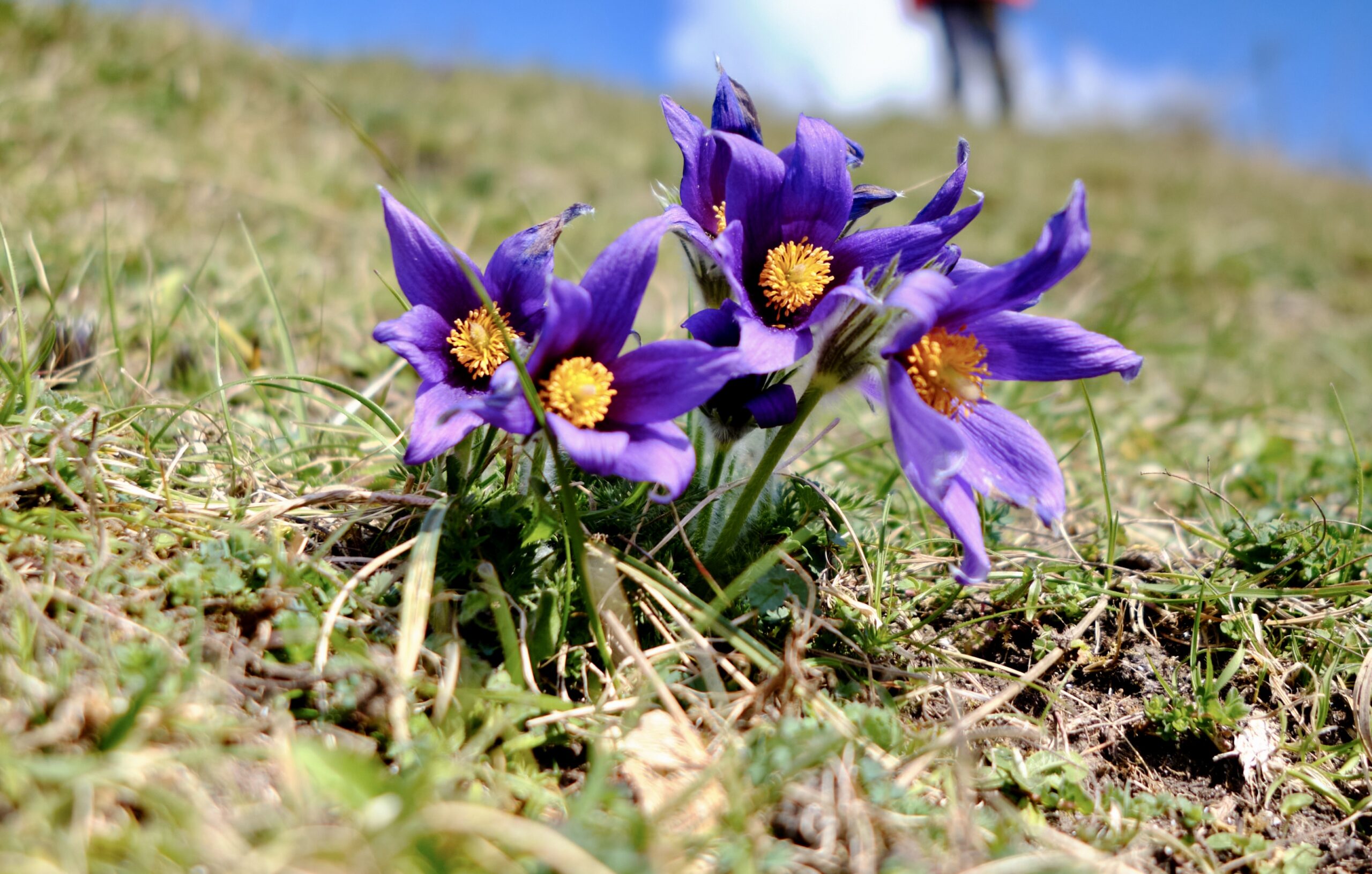Introduction
As Easter approaches and spring arrives, I thought it would be interesting to write about a flower you may encounter. If you take a walk in the chalk hills near where I live at this time of year, you may come across the delicate yet striking pasqueflowers. These blooms, with their vivid purple petals and golden centres, are a captivating sight, especially when they emerge along ancient boundary markers and near undisturbed burial barrows on chalk upland areas.
Pasqueflowers have always drawn my attention, not just for their beauty but for the stories they carry. Their presence in the landscape brings together science, folklore, and history, making them an interesting springtime flower.

The Science of Pasqueflowers
The pasqueflower (Pulsatilla vulgaris) belongs to the buttercup family, Ranunculaceae, which includes over 2,000 species. The genus name Pulsatilla comes from the Latin pulsare, meaning “to pulsate” or “quiver,” a reference to the way these flowers nod in the wind. Vulgaris, meaning “common,” is now rather ironic, as pasqueflowers have become rare in the UK.
These plants are closely related to other Pulsatilla species, such as the alpine and eastern pasqueflowers, and share adaptations to withstand the often harsh conditions of early spring. Their fine, silky hairs help insulate against frost, allowing them to thrive despite unpredictable weather.
In Britain, pasqueflowers are now confined to a few chalk grasslands areas, mainly in southern England. They favour shallow, undisturbed soils and flower between late March and May. Once they were a little more widespread, they are now classified as ‘Vulnerable,’ surviving in mainly in just a handful of protected nature reserves.
Folklore and Warrior Legends
Pasqueflowers have long been associated with battlefields and burial grounds, leading to legends that they grow from the spilled blood of warriors.
In Cambridgeshire, they are known as Dane’s Blood, linked to battles against Viking invaders. Some stories connect them to the graves of Roman soldiers, suggesting that they sprouted where fallen warriors were laid to rest.
Elsewhere in Europe, pasqueflowers are tied to fertility traditions and, in Germanic mythology, associated with Ostara, the goddess of dawn and spring.
These myths, though romantic, have a more practical explanation. Pasqueflowers thrive in undisturbed landscapes, and sites such as ancient burial mounds and boundary banks have remained largely untouched for long periods of time. Additionally, these areas were often used as grazing land rather than being plowed, creating the perfect habitat for pasqueflowers to persist.

Christian Symbolism & the Easter Connection
The name “Pasque” derives from the Old French Pascha, meaning Easter. This connection is reinforced by its alternative name, the Anemone of Passiontide, as it blooms around the time of the Christian holiday.
The deep purple petals have been linked to Lent and penance.
The flower’s emergence from barren winter landscapes mirrors Christian themes of resurrection and renewal.
Some suggest that, like other pagan traditions repurposed by the Church, the pasqueflower’s symbolism may have been adapted to fit Christian narratives. However, there is little direct evidence of this, and it is possible that the association arose naturally due to its timely appearance in the landscape.

A Flower at Risk
Despite their storied past, pasqueflowers are now in decline. 99% of the UK’s pasqueflowers survive in just a few locations. Conservation efforts are crucial to ensuring that these flowers continue to bloom for future generations.
Where to See Pasqueflowers in the UK
If you want to see these beautiful flowers in the wild, some of the best locations include:
Therfield Heath, Hertfordshire: Home to one of the most abundant displays on Church Hill, the pasque flower is the county flower of Hertfordshire.
.
Barton Hills National Nature Reserve, Bedfordshire: Another key site for pasqueflower conservation.
Smaller populations exist in other nature reserves, but their continued survival depends on protecting the fragile chalk grassland habitats they call home.

Conclusion: More Than Just a Beautiful Flower
Beyond their undeniable beauty, pasqueflowers carry tales of warriors, myths, Christian traditions, and the history of Britain’s chalk landscapes. They serve as a symbol of perseverance, enduring in places where time and “progress” seem to move at a slightly slower pace.
The next time you take a walk in the chalk hills during springtime, take a moment to pause and search for these rather striking and extraordinary flowers.


